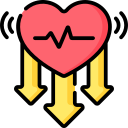Chosen theme: Grounding Meditation Practices for Stressful Situations. When anxiety spikes, you can return to your senses and body, reclaiming calm within minutes. Join us, try a practice today, and subscribe for weekly grounding prompts.
How Grounding Calms a Stressed Nervous System
Stress, the brain, and your body
Under stress, your amygdala flags possible danger, cortisol rises, and attention narrows to threat. Grounding expands your sensory field again, reminding your brain that your body is safe right now. That shift softens the alarm, enabling clearer decisions without ignoring difficult feelings.
The science behind grounding meditation
Grounding leverages interoception and exteroception: noticing internal sensations and external cues. By naming sensory details, you recruit prefrontal circuits that regulate emotion. Simple practices like breath pacing and tactile focus stimulate the vagus nerve, nudging your nervous system toward rest-and-digest stability.
A quick self-check before you ground
Rate your tension from zero to ten, note your three strongest sensations, and set a tiny goal, like lowering intensity by one point. This micro-intention clarifies progress and builds confidence. Share your starting number in the comments to inspire someone facing a similar moment.
The 5-4-3-2-1 Sensory Reset
Look for five visual details with curiosity, not judgment. Colors, edges, shadows, light reflections, and shapes all count. Describe them silently with simple words. During a crowded station delay, I traced lines on the tile floor and felt my breath deepen by the fourth observation.
Identify four sounds, from nearest to farthest, then notice three textures against your skin. The chair, your clothing, the air. Let each sensation anchor you for a breath or two. This gentle mapping interrupts spirals and reminds your body there is stable ground beneath you.
Notice two smells, then one taste, even if subtle like toothpaste or coffee aftertaste. End with a grounding phrase: I am here, this moment is manageable. Repeat slowly. Comment with your favorite anchor phrase; your words might become someone else’s lifeline during a hard afternoon.

Breath Practices That Plant Your Attention
Inhale four counts, hold four, exhale four, hold four. Imagine drawing a quiet square in your mind. Try four rounds, then recheck your tension rating. Pilots and athletes rely on this structure under pressure. Subscribe for a printable card you can keep in your bag or desk.

Movement and Body-Based Grounding
Starting at your feet, gently tense a muscle group for five seconds, then release for ten. Move upward methodically. Notice warmth and softening after each release. During an anxious evening, I used a two-minute version and felt enough ease to return to an important conversation kindly.
Movement and Body-Based Grounding
Walk slowly, feeling heel, arch, toes. Count steps to four, then restart. If thoughts surge, name a nearby color and return to your feet. This is meditation in motion, perfect for hallways, sidewalks, or kitchens. Invite a friend to try it and text each other your step counts.


Choose one cue, like a notification or door closing, to take a slow breath and feel your feet. Keep your gaze soft, shoulders relaxed. These micro-resets stack surprisingly well. Share which cue you picked today, and we will gather the most effective ideas in a reader roundup.

Use a smooth coin, ring, or key as an anchor. Trace edges, notice temperature, and breathe as you describe tiny details. This gives your hands a job besides worry. I keep a small river stone from a favorite hike; holding it brings that steady memory right back.

Pair sensory grounding with compassionate phrases. Try I can do the next small step or My body can help me through this. Keep language specific and kind. Post your go-to line below; seeing others’ words reduces isolation and normalizes caring for ourselves during stressful situations.



